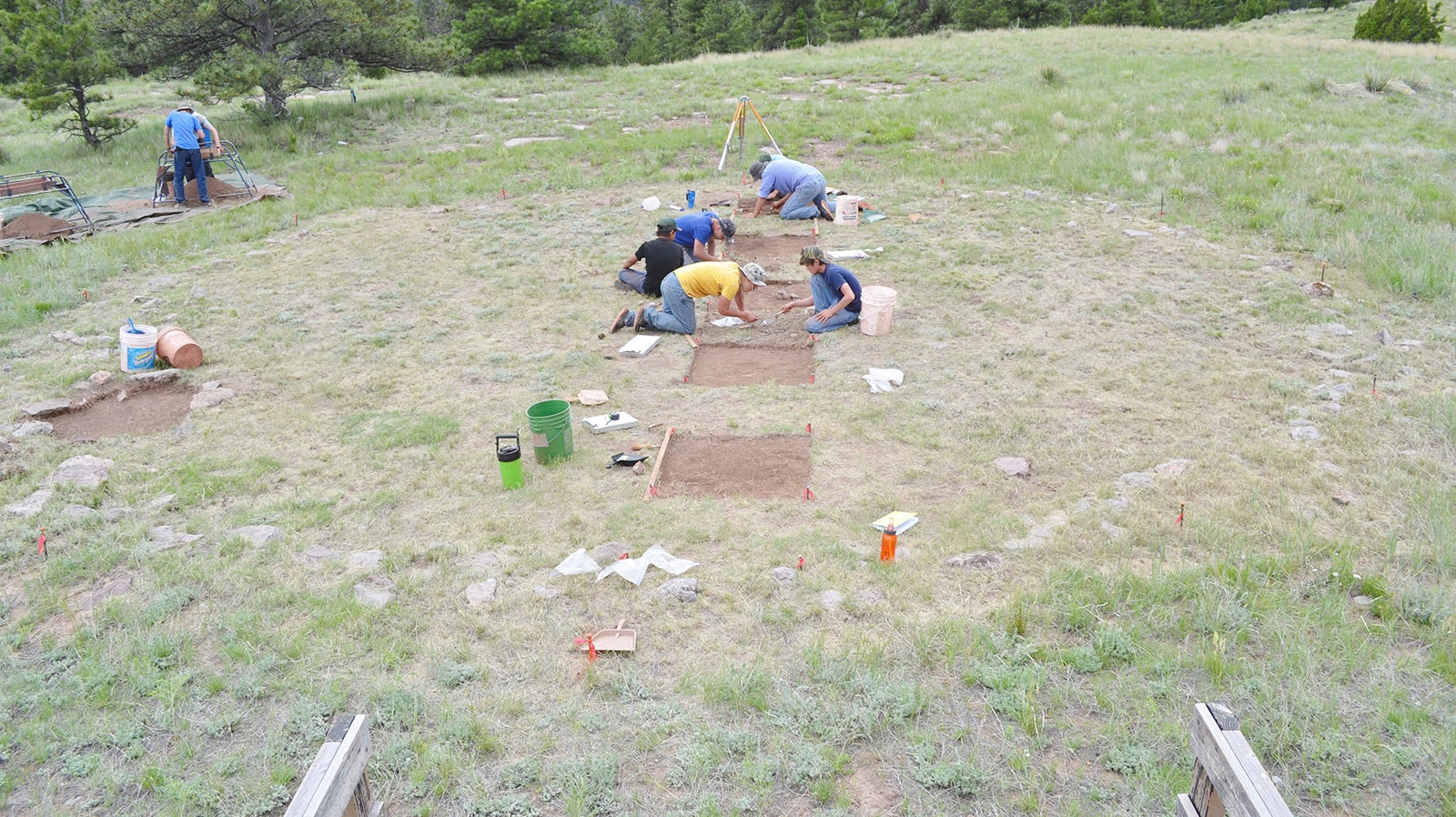A nonprofit group says a bill that would fence in and protect an archeological site in Platte County is not only unnecessary, but potentially detrimental, and that they plan to oppose it.
The bill, Senate File 58, is awaiting further consideration by the House after being approved in the Senate 26-5. It proposes to put a fence around the Sutton site, which is adjacent to the Powars II red ochre mine. The latter is among the oldest such mines north of southern Mexico.
George Zeimans, an archaeologist who is with the Sunrise Historic and Prehistoric Preservation Society and has done some studies at the site, told Cowboy State Daily that ceremonial circles at the Sutton site weren’t used for dancing, as had been suggested by State Archaeologist Spence Pelton.
Instead, Zeimans’ research suggests the sites were associated with processing iron ore from the mine.
“In each one of (the pits) we found a shallow pit, about a foot and a half in diameter and about a foot deep that was just full of this ore. And then the rest of the floor was covered with broken-up pieces of ore that they had pulverized and somehow are processing in those pits to extract the red ochre,” Zeimans said. “Nobody has ever found that kind of evidence anywhere before, so that makes the site pretty significant.”

Pelton Cites Tribal Information
Pelton told Cowboy State Daily he based his assertion on information from several members of Wyoming tribes.
“I defer to their judgment on that sort of thing,” he said.
But in general, he believes that a lot more study is needed before anyone can definitively say what the circles were being used for and when.
“I was aware that there had been some work done out there previously,” he said. “But I don’t think any of the work that’s been done there can really provide commentary on the things they’re saying. We just need to do a lot more archaeological work out there. There’s a lot of unknowns about it.”
Problems With Senate File 58
The disputed information about the Sutton site’s ceremonial circles is just one of several issues that Zeimans and the Sunrise Historic and Prehistoric Preservation Society, a nonprofit group that’s been working to preserve the Powars II site, told Cowboy State Daily that they have with Senate File 58.
Zeimans told Cowboy State Daily the measure has just not been well thought out, and that he believes there are some large and expensive holes in what the state wants to do at the site.
“There’s never been any surveys up there,” he said. “That’s going to cost a lot of money, probably much more than I think this Senate File 58 said they were going to spend.”
Senate File 58’s fiscal note does not mention the cost of doing any survey work. It lists an overall cost of $194,306, of which is $159,642 is for installing a fence. The remainder includes $16,000 for a remote communication and alarm system, and $1,000 for no trespassing signs.
State Parks Deputy Director Nick Neylon told Cowboy State Daily that the department has already committed existing resources for survey work, and suggested that is why it’s not listed on the fiscal note.

Fence Could Bisect Ceremonial Circles
Once a survey is done, Zeimans believes the state will find that the Sutton site bisects one or more of the ceremonial circles, which makes fencing it problematic.
Zeimans also doesn’t believe any looting was taking place, but fears that a public listing and signs identifying the site could lead to that very thing.
“It will be marked on maps, and it will be information they put out for state parks and state archaeological sites,” he said. “It’s a rare and unusual site and that’s going to attract people, especially artifact collectors to try and go to the site.”
Neylon said any signs will simply be “no trespassing signs” and won’t say anything about it being an archaeological site.
Sutton Site Already Has Some Protection
Public access, meanwhile, is not readily available to the site, which is very remote, the Powars II site’s owner, John Voight, told Cowboy State Daily.
Voight’s property almost completely surrounds the Sutton site, he said. In fact, he has put a locked gate on the back of his property, which he believes is already helping to keep trespassers out of the area.
Voight also says he has told state officials he cannot guarantee public access to the site. The only existing road is a roughly maintained route for hauling ore out of the nearby mine that he operates.
It’s not suitable for public access, he said. He also fears having a mixture of public traffic on that road with heavy trucks hauling ore would jeopardize his mining permits.
But he agrees the site should be preserved and studied.
“We all completely agree that this property, the Sutton site, needs protection, but we think maybe, you know, the cart is a little bit in front of the horse here (with Senate File 58),” he said.
Different Sides Agree On Value of Site
While there may not be agreement on the best way to go about protecting and preserving the Sutton site, it and the Powars II mining site together are incredibly rich, with great potential for shedding light on the lives of early men, Zeimans told Cowboy State Daily.
“(The Sutton site) is a separate site, but it should be included as part of this entire site,” he said. “There’s a whole complex of sites out there that are inter-related, there’s no doubt about that.”
Researchers have already found some unique points at the site, different from Clovis points, which are being called Sunrise points. Determining whether those points preceded Clovis man is the subject of ongoing research.
“There’s a whole series of people — about four different cultures — that kind of logically have never been sorted out,” Zeimans said. “And in order to do that, what you need are good, stratified deposits, where you can find any sort of thing and see how it developed. There’s a good chance that we can do that at the Powars II site.”
The potential significance of research that can be done at the site is one reason why Voight has donated artifacts from the site to the nonprofit Sunrise Historic and Prehistoric Preservation Society, which is working to preserve the former town of Sunrise, as well as all the history and prehistory associated with the Powars II site.
Voight has also donated what he said is the state’s first YMCA building to the effort. It will be used to create a museum and study center that will share the archaeology and history of the Sunrise community and the nearby archaeological sites.
“It’s just so magical up here, it really is,” Voight said. “And so much serendipity has happened since I’ve owned this place. It’s just been amazing, and it continues and continues.”





